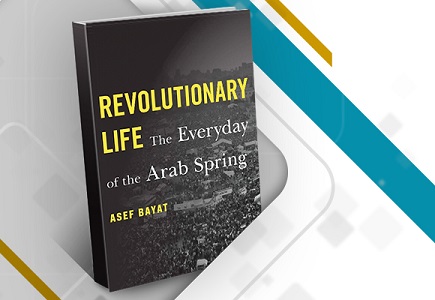A COMPARITIVE STUDY ON STRESS AND ANXIETY AMONG PRETERM AND NORMALLY DELIVERED WOMEN
Rashida KP
Faculty in Psychology –Najath College of Science and Technology, Karuvarakund, Kerala
Volume No : 4
Issue No : 4

Everyone experiences stress to some degree. The way you respond to stress, however, makes a big difference to your overall well-being. Sometimes, the best way to manage your stress involves changing your situation. At other times, the best strategy involves changing the way you respond to the situation. Stress is a feeling of emotional strain and pressure. Stress is a type of psychological pain. Small amounts of stress may be desired, beneficial, and even healthy. This study aimed to investigate the stress and anxiety among preterm delivery women and normal delivery women. Because in the recent years the preterm delivery are more increased because of the lifestyle, the lack of exercise, uterus, cervix and placental problems, smoking, allergies, using drugs, infections, lower or higher blood pressure, diabetics all are may leads to preterm delivery. This study has to understand which delivery time, preterm delivery or normal deliveries the women are more stressed and anxious it may have affect the child.
KEY WORDS
Stress, Anxiety, Normal birth, Preterm birth
INTRODUCTION
Stress can be defined as any type of change that causes physical, emotional, or psychological strain. It is the body's response to anything requiring attention or action. When individuals experience or perceive challenges to their physical or emotional well-being that exceed their coping resources and abilities, the psychological condition that results is typically referred to as stress.
To avoid confusion:
• External demands are referred to as stressors,
• The effects they create within the organism are called stress,
• Efforts to deal with stress are termed coping strategies.
It is important to note that stress is fundamentally an interactive and dynamic construct, reflecting the ongoing interaction between the organism and its environment (James N. Butcher, 2014).
Anxiety is an emotion characterized by feelings of tension, worried thoughts, and physical changes like increased blood pressure. People with anxiety disorders usually have recurring intrusive thoughts or concerns. They may avoid certain situations out of worry and may experience symptoms such as sweating, trembling, dizziness, or a rapid heartbeat (APA).
In contrast to fear and panic, the anxiety response is a complex blend of unpleasant emotions and cognitions, oriented more towards future threats and more diffuse than fear. Anxiety, like fear, has cognitive/subjective components, including negative mood, worry about possible threats, self-preoccupation, and a sense of being unable to predict or control future events.
At the physiological level, anxiety often results in a state of tension and chronic over-arousal, preparing the body for potential danger ("something awful may happen, and I had better be ready for it"). Unlike fear, anxiety does not trigger the "fight or flight" response (Barlow, 1988, 2002). Evidence from subjective reports and neurological studies supports the idea that anxiety is descriptively and functionally distinct from fear or panic (James N. Butcher et al., 2014).
OBJECTIVES
• To study the stress among preterm and normally delivered women.
• To study the anxiety among preterm and normally delivered women.
• To study the level and intensity of stress and anxiety among preterm and normal delivery samples.
• To compare the stress and anxiety between preterm and normal delivery women.
HYPOTHESIS
• There is no significant difference on stress between preterm delivered and normally delivered women.
• There is no significant difference on anxiety between preterm delivered and normally delivered women.
• There is significant relationship between stress and anxiety among preterm delivered and normally delivered women.
REVIEW OF LITERATURE
Studies related to stress between preterm and normally delivered women.
• Entringer, buss et al (2010) conducted a study on attenuation of maternal psychophysiological stress responses and the maternal cortisol awakening response over the course of human pregnancy. A longitudinal design was employed to quantify maternal psychophysiological stress reactivity and the CAR at approximately 17 and 31 weeks gestation in as ample of 148 women. The findings is among pregnant women there is a progressive attenuation of psychophysiological stress responses was advancing gestation.
• Caroline lilliecreutz et al (2016) conducted a study on effects of maternal stress during pregnancy on the risk for preterm birth. The aim of the study was to investigate the effect of maternal stress during pregnancy on the risk of preterm birth. Conclusion is that Stress seems to increase the risk of preterm birth. It is of great importance to identify and possibly alleviate the exposure to stress during pregnancy and by doing so try to decrease the preterm birth rate.
Studies related to anxiety between preterm and normally delivered women.
• Rose, Pana, et al (2015) was studied on Systematic reviews (SR) and meta-analyses (MA) that previously explored the relationship between prenatal maternal anxiety (PMA) and preterm birth (PTB). The aim is this SRMA provides a summary of the published evidence of the relationship between PMA and PTB while examining methodological and statistical sources of heterogeneity. The findings indicate a significant association between PMA and PTB.
• M Sayil , Gure , et al (2006) conducted a study on first time mothers anxiety and depressive symptom across the transition to motherhood association with maternal and environmental characteristics. The aim of this study was to examine demographic, environmental, belief and personality factors related to maternal well-being was measured as prenatal anxiety and postnatal depression. A total of 200 pregnant women participated in this study. It was concluded that both common and culture specific maternity and early care policies in the culture.
METHODOLOGY
RESEARCH DESIGN
The research design refers to the overall strategy that choose to integrate the different components of the study in coherent and logical way, thereby, ensuring we will effectively address the research problem; it constitutes the blueprint for the collection, measurement, and analysis of data. The present study used the exploratory research design to verify the formulated hypothesis. The data plans to be collected through a relevant questionnaire namely Perceived Stress Scale (PSS) by Sheldon Cohen and Beck Anxiety Inventory (BAI).
RESEARCH INSTRUMENTS
The following psychological instruments will be used to assess the perceived stress and anxiety among research sample.
The perceived stress scale (14 items) by Cohen et al, (1983). It is 14 items of questions with multiple choices. Cohen et al. (1983) originally argued the PSS to be a dimensional measure of perceived stress, the research community generally views the 14 and 10 items forms as two dimensional.
PSS-10 scores are obtained by reversing the scores on the four positive items: for example, 0=4, 1=3, 2=2, etc. and then summing across all 10 items. Items 4, 5, 7 and 8 are positively stated items.
• Scores ranging from 0-13 would be considered low stress
• Scores ranging from 14-26 would be considered moderate stress
• Scores ranging from 27-40 would be considered high perceived stress
Beck Anxiety Inventory
The Beck Anxiety Inventory (BAI) consists of 21 items with a Likert scale ranging from 0 to 3 and raw scores ranging from 0 to 63. It was developed in 1988 and a revised manual was published in 1993 with some changes in scoring. The BAI scores are classified as minimal anxiety (0 to 7), mild anxiety (8 to 15), moderate anxiety (16 to 25), and severe anxiety (30 to 63).
Scoring of beck anxiety inventory
Scoring: The total score is calculated by finding the sum of the 21 items.
Score of 0-21 = low anxiety, Score of 22-35 = moderate anxiety, Score of 36 and above = potentially concerning levels of anxiety.
SAMPLING TECHNIQUE
The random sampling method will be used for the present study.
PARTICIPANTS
Samples will be collected from community health Centre kalikavu with 40 preterm delivery women and 40 normal delivery women.
STATISTICAL TOOLS
The following statistical method will be used to verify the formulated hypothesis.
o The independended t- test will be verify hypothesizes 1 and 2.
o The product moment correlation method will be used to verify hypothesis 3.
RESULT AND DISCUSSION
In order to meet the objectives of present study of the following hypothesis were formulated.
• There is no significant difference on stress between preterm delivered and normally delivered women.
• There is no significant difference on anxiety between preterm delivered and normally delivered women.
• There is significant relationship between stress and anxiety among preterm delivered and normally delivered women.
The result and discussion of the present study is presented hypothesis wise.
Hypothesis-1
There is no significant difference on stress between preterm delivered and normally delivered women. The independent t-test was used to verify the hypothesis-1. The result is presented in Table-1.
Group
N=80,df=78 |
Mean |
SDs |
t-value |
Significance |
Preterm Delivered Women
|
25.65 |
8.75 |
9.23 |
.000*** |
| Normally Delivered Women |
11.97 |
3.31 |
9.23 |
.000*** |
***P<0.001
Hypothesis-2
There is no significant difference on anxiety between preterm delivered and normally delivered women. The independent t-test was used to verify the hypothesis-2. the mean of preterm delivered women is 32.60 and normally delivered women is 16.30 in the case of anxiety. So the mean value is more in preterm delivered women than the normally delivered women. And the SDs in preterm delivered women and normally delivered women are 10.34 and 5.84 respectively. The t-value of the above table is 8.67 and the significant difference is .000. This means anxiety is more shows in preterm delivered women than the normally delivered women. Women who experience high level of anxiety during the periods of preterm birth, it associated with their future life and their of child future.
Hypothesis-3
There is significant relationship between stress and anxiety among preterm delivered and normally delivered women. In order to verify hypothesis-3, the product moment correlation was calculated. The result is presented in Table -3. Table-3 shows correlation coefficient of stress and anxiety.
| Vriables |
Correlation coefficient |
| Stress- Anxiety |
.432** |
**P<0.01
Table-2 mentioned that the correlation coefficient of stress and anxiety among preterm delivered and normally delivered women is .432. So there is a significant relationship between stress and anxiety among preterm delivered and normally delivered women.
CONCLUSION
- There is a highly significant difference in stress levels between preterm and normally delivered women.
- There is a significant difference in anxiety levels between preterm and normally delivered women.
- There is a significant positive relationship between stress and anxiety among preterm and normally delivered women.
REFERENCES
Butcher, Hooly et al (2014). Abnormal psychology, sixteenth edition ISBN Published by Pearson Education in South Asia.
Sapolsky, Robert M. (2004). Why Zebras Don't Get Ulcers. 175 Fifth Ave, New York, N.Y.: St. Martin’s Press. pp. 37, 71, 92, 271. ISBN 978-0- 8050- 7369-0.
Fiona Jones, Jim Bright, Angela Clow, Stress: myth, theory, and research Archived 2018-05-08 at the Wayback Machine, Pearson Education, 2001, p.4
Selye, Hans (1974). Stress without distress. Philadelphia: J.B. Lippincott Company. p. 171.
Selye, Hans (1983). "The Stress Concept: Past, Present and Future". In Cooper, C. L. (Ed.). Stress Research Issues for the Eighties. New York, NY: John Wiley & Sons. pp. 1–20.
Selye, Hans (1975). "Implications of Stress Concept". New York State Journal of Medicine. 75: 2139–2145.
Hargrove, M.B.; Nelson, et al (2013). “Generatingeustress by challenging employees: Helping people savor their work”.
Hargrove, M. B.; Nelson, D. L.; Cooper, C. L. (2013). "Generatingeustress by challenging employees:Helping people savor their work". Organizational Dynamics. 42: 61–69. doi:10.1016/j.orgdyn.2012.12.008.
Headquarters, Department of the Army (1994). Leader’s Manual for Combat Stress Control, FM 22–51, and Washington DC.
Pastorino, E. & Doyle-Portillo, S. (2009). What is Psychology?. 2nd Ed. Belmont, CA: Thompson Higher Education.





